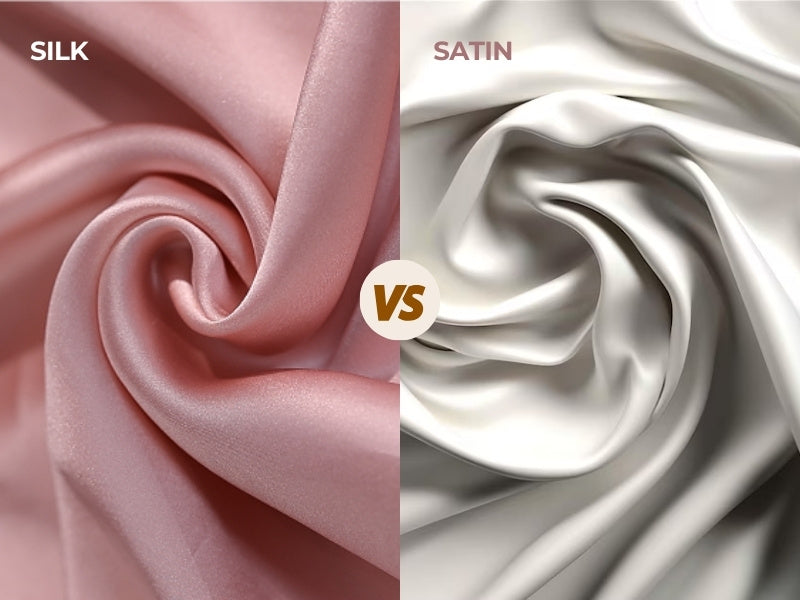How To Store Your Silk Clothing
Table of Contents
Silk, with its luxurious drape and soft touch, has been a symbol of elegance and sophistication for centuries. But along with its undeniable beauty comes the need for special care. Silk, being a natural fiber, is delicate and requires proper storage to maintain its pristine condition and extend its lifespan. In this article, we'll guide you through the essential steps of storing your silk clothing, ensuring your treasured pieces continue to radiate elegance for years to come.
The Enemies of Silk: Understand the Threats
Before diving into storage solutions, it's crucial to understand the key factors that can damage your precious silk clothes. These silent enemies include:
- Light: Direct sunlight can cause silk to fade, losing its vibrant colors and developing a dull, yellowish appearance.
- Humidity: High humidity levels can lead to the growth of mold and mildew, damaging the fabric and creating unpleasant odors.
- Heat: Extreme temperatures, whether hot or cold, can weaken the silk fibers, making them brittle and prone to tearing.
- Chemicals: Harsh chemicals found in some cleaning products or moth repellents can break down the silk fibers, compromising the fabric's strength and integrity.

By being aware of these threats, you can create a storage environment that protects your silk garments and preserves their beauty and longevity.
The Ideal Storage Environment: Creating a Silk Sanctuary
Now that you know what to guard against, let's explore the ideal environment for storing your silk clothing. Remember, the golden rule is: cool, dry, and dark.
- Location: Look for a cool, dry space within your home, such as an interior closet or dresser drawer. Avoid basements or attics, which can be prone to humidity and temperature fluctuations.
- Light: Direct sunlight is a big no-no. Store your silk garments away from windows or any source of direct light.
- Temperature: Ideally, aim for a temperature range of 60-70°F (15-21°C) . Avoid areas close to heat vents, radiators, or other sources of heat.
Following these guidelines will ensure your silk garments rest comfortably in a safe haven, protected from the elements and ready to be worn again whenever the occasion arises.
Proper Storage Methods: Hanging or Folding?
Once you've identified the perfect storage location, the next step is to choose the appropriate method for storing your silk garments. Here are two effective methods:
Hanging:
- Padded hangers: Opt for padded hangers specifically designed for delicate fabrics like silk. They prevent creasing and slipping, keeping your garments wrinkle-free. Look for hangers with wide shoulders to avoid leaving marks on the garment.
- Silk hangers: Consider investing in hangers made from silk or other smooth materials to minimize friction and snags.
Folding:
- Loose folds: Instead of tight folds that can leave permanent marks, opt for loose folds or gentle rolling. This method minimizes creasing and preserves the natural drape of the garment.
- Storage boxes: For folded silk garments, use breathable storage boxes made from natural materials like cotton or muslin. These allow air circulation and prevent moisture buildup, which can lead to mustiness or mildew growth. Avoid using airtight plastic bags, as they can trap moisture and damage the fabric.

Remember, regardless of the method you choose, ensure your garments are completely dry before storing them.
Additional Tips for Silk Storage: Going the Extra Mile
While the above methods provide a solid foundation for proper silk storage, here are some additional tips to ensure your garments receive the ultimate TLC:
- Clean before storing: Always ensure your silk garments are dry-cleaned or hand-washed according to the care instructions on the label. Never store dirty clothes, as dirt and perspiration can attract pests and lead to fabric deterioration.
- Cedar chips: Consider placing cedar chips or sachets into your storage containers. These natural repellents deter moths and other insects while providing a pleasant, subtle fragrance.
- Airing out: Every few months, or at least once or twice a year, take your silk garments out of storage and air them out for a few hours. This helps prevent mustiness and refreshes the fabric.
- Professional storage: If you own particularly valuable or rarely worn silk items, consider professional storage facilities. These facilities offer climate-controlled environments and specialized care to ensure the long-term preservation of your treasured pieces.
FAQs About Storing Silk Clothing
Q1: How often should I clean my silk clothing before storing?
A1: It's recommended to clean silk garments before storing, ideally following each wear or at least once every season. This helps remove dirt, oils, and any potential stains that could attract pests or cause damage during storage.
Q2: Can I use plastic bags to store silk clothing?
A2: No, it's best to avoid airtight plastic bags for silk storage as they can trap moisture, leading to mildew and mustiness. Instead, opt for breathable storage bags made from natural materials like cotton or muslin to maintain optimal conditions.
Q3: Should I store silk clothing in the attic or basement?
A3: It's not advisable to store silk clothing in the attic or basement due to potential temperature fluctuations, humidity, and exposure to pests. Opt for interior closets or dresser drawers in cool, dry areas of your home.
Q4: How can I prevent wrinkles when storing silk clothing?
A4: To prevent wrinkles, use padded hangers for hanging silk garments and avoid tight folds when folding. Additionally, periodically airing out silk garments and gently steaming or ironing them before storage can help maintain their smooth appearance.
Q5: Are there any natural methods to protect silk clothing from moths?
A5: Yes, cedar chips or sachets are natural moth repellents that can help protect silk clothing. Place them in storage containers or drawers where silk garments are stored to deter moths and other pests.
Q6: Can I store silk scarves and ties the same way as silk clothing?
A6: Yes, you can use similar storage methods for silk scarves and ties, such as hanging them on padded hangers or folding them loosely in breathable storage bags. Just ensure they are clean and stored in a cool, dry environment away from direct sunlight.
Conclusion
By adhering to these simple storage practices, you can ensure your silk garments stay in pristine condition, ready to elevate your outfit whenever you desire. Remember, proper care is an investment in the longevity and beauty of your silk pieces, allowing them to continue telling your story of elegance and sophistication for years to come.
![[Light Blue] SilkSilky Pure Silk Notch Collar Women's Pajamas 001,](http://silksilky.com/cdn/shop/files/ab83afb9301666ee2f174a8ae72ffda4_4e9bb488-7880-40fe-9e69-f0fd823857c5.jpg?v=1764653199&width=1200)
![[Light Blue] SilkSilky Pure Silk Notch Collar Women's Pajamas 002,](http://silksilky.com/cdn/shop/files/db8dbeee5354fe3b631b963715847ffe.jpg?v=1764653202&width=1200)
![[Dark Red] SilkSilky Pure Silk Notch Collar Women's Pajamas 001,](http://silksilky.com/cdn/shop/files/599ed0811e1a5fcfa55bdc80a0279704_2643c850-a793-4475-a52b-7fef1bbd7e36.jpg?v=1762233837&width=1200)
![[Dark Red] SilkSilky Pure Silk Notch Collar Women's Pajamas 002,](http://silksilky.com/cdn/shop/files/9e022d4dd4f99aed4af8da3f58fcfd5b_efb9bafe-3d71-4283-9b81-e339ff08f352.jpg?v=1762233837&width=1200)
![[White] SilkSilky Pure Silk V Neck Nightgown 001,](http://silksilky.com/cdn/shop/files/a8ae95260a57844b1e2e00c4fcfabdcc_b922b270-af10-4e96-9493-0d877bd663db.jpg?v=1764140639&width=1200)
![[White] SilkSilky Pure Silk V Neck Nightgown 002,](http://silksilky.com/cdn/shop/files/24ac506750f8c38c51bb5b6d0ee15287.jpg?v=1764140639&width=1200)
![[Pink] SilkSilky Pure Silk Sleep Cap 001,](http://silksilky.com/cdn/shop/files/SilkSilky_Pure_Silk_Sleep_Cap_Pink_001_C-250529006.jpg?v=1762221980&width=1200)
![[Pink] SilkSilky Pure Silk Sleep Cap 002,](http://silksilky.com/cdn/shop/files/SilkSilky_Pure_Silk_Sleep_Cap_Pink_002_C-250529006.jpg?v=1762221980&width=1200)
![[Steel Blue] SilkSilky Pure Silk Notch Collar Women's Pajamas 001,](http://silksilky.com/cdn/shop/files/05b358f92fb5d252122b00d69a2fcfc5_88211a42-88c4-4448-8cb3-5f18529bfef8.jpg?v=1762237226&width=1200)










